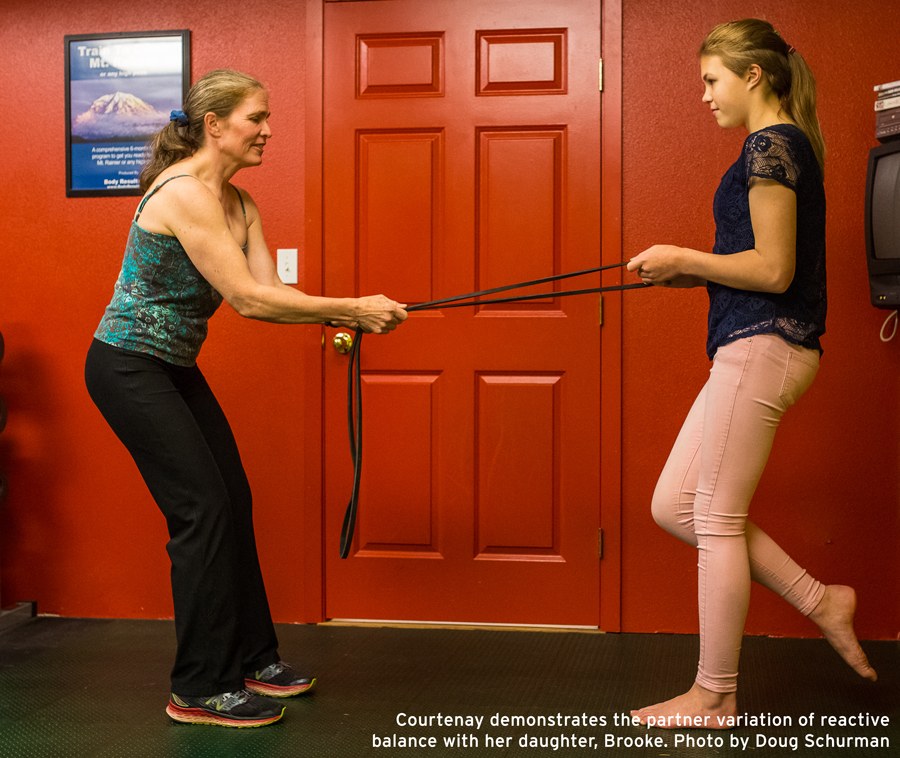
By Courtenay Schurman, MS, CSCS, PN2
Improving your reactive balance will help boost your performance and confidence in the mountains, whether your next objective is a winter snowshoeing outing or ski trip, or a climb of Denali or Mt. Rainier next spring. By "reactive balance" I refer to the ability to keep yourself upright and over one leg when external dynamic forces act on you, such as a branch pushing you off balance with a weighted pack, a slippery scree slope that gives way, roots in your path, or a rock heading toward you that makes you dodge quickly.
Recently, while working with a few clients who were rebuilding strength following various lower-body injuries, I stumbled (pun intended) across an interactive balancing exercise that helps clients develop balance and stability in the large muscles of the hips and thighs and smaller muscles of the calves, ankles and feet. What's more, it's a fun challenge! Your goal is to actively engage the large hip muscles on the side of your butt known as the gluteals.
SET UP: ONE PERSON OPTION
To do this exercise alone, all you need is a weighted object (medicine ball, gallon jug, dictionary, baby, weight plate, or dumbbell). Stand on one leg and focus on getting centered over the three points of balance in your foot: big toe, pinky toe, and heel. Keep your abdominals tight in order to maintain a neutral spine, with weight slightly shifted over one leg and glutes tight.
PERFORMANCE
First, aim for simply balancing on one leg for 30 seconds without any movement. Once that feels solid, hold a 5-10 pound weight in both hands and gently move it around side to side or in a figure eight in front of you, staying centered over your foot. Finally, imagine several people standing ten feet in front of you and dynamically push the weight forward as though you are going to release it. Now pull the weight back quickly and pass slightly left, then right.
Try dynamic pushes for 30 seconds, then repeat on the other leg. Rest a minute, then repeat for a total of three rounds. Add this to a dynamic warm up to get your glutes engaged, or perform at the end of a workout before you stretch.
PARTNER VARIATION
If you prefer to work out with a friend or partner, you can use a medicine ball and play a one-legged game of catch. Even harder, have one person stand on two legs and try to challenge the other with a towel, rope, or resistance band, as shown. The person on one leg should keep band close to the body, held in both hands. The pulling partner should “sneak up” on the working partner, sometimes letting up on resistance (for backward reactivity) and sometimes pulling sideways, forward, diagonally. The key to making the glutes work is unpredictability. The goal is not to pull the person off balance but to set the glutes on fire.
For more how-to exercises and nutrition tips for the outdoor athlete, visit Courtenay Schurman’s website at www.bodyresults.com or send her a question at court@bodyresults.com.
 Courtenay Schurman
Courtenay Schurman